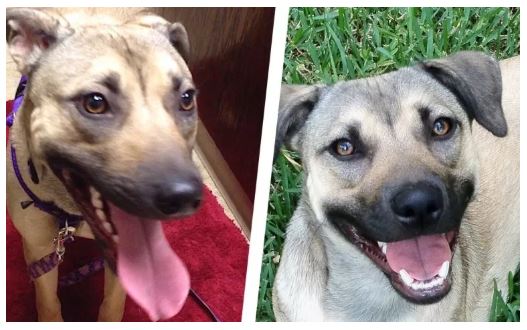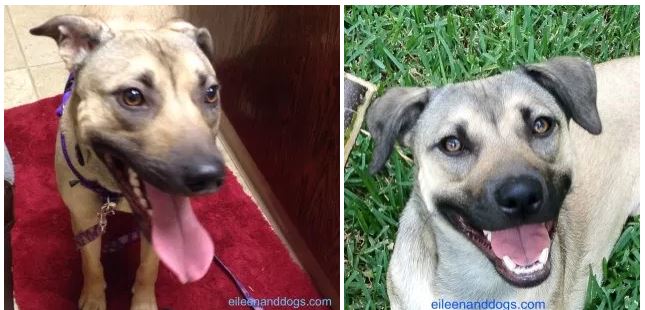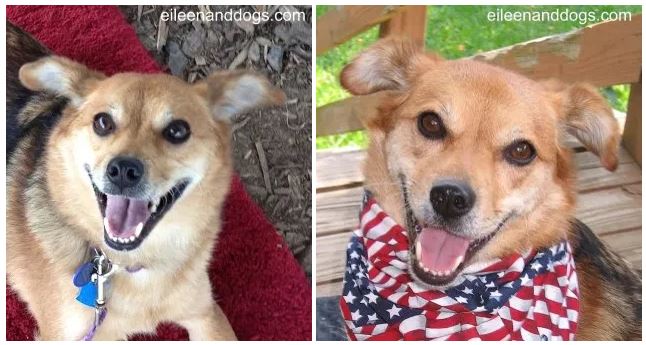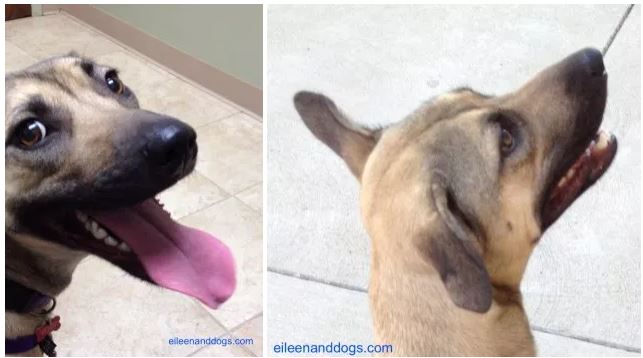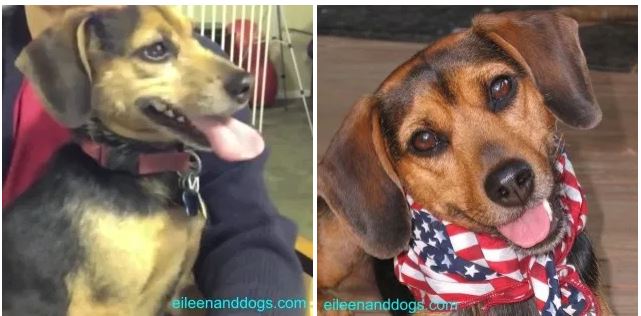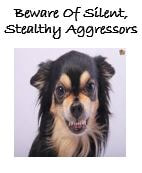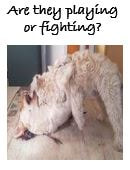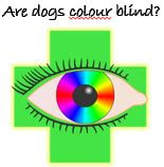Is That “Smiling” Dog Happy?
www.eileenanddogs.com
(This is a really great website with an excellent blog (which you can sign up for and follow so you don't miss anything), body language examples and so much more - do give it a visit and we are sure you will enjoy and learn from the article below)
(This is a really great website with an excellent blog (which you can sign up for and follow so you don't miss anything), body language examples and so much more - do give it a visit and we are sure you will enjoy and learn from the article below)
Is that 'Smiling' Dog Happy? Maybe, but maybe not!
We humans tend to get warm and fuzzy feelings when we see dogs “smile.”
It’s true that some dogs’ mouths open in a cute smile when they are relaxed and happy. But a dog with his mouth open could alternatively be panting from pain, stress, or fear.
Can we tell the difference?
The following pairs of photos show my dogs stressed (left column) and relaxed (right column). The dogs have their mouths open in all the photos.
The usual disclaimers apply. When you run across someone’s still photo with no context, you can’t fairly make assumptions. It might have been taken during the millisecond in which a dog changed his expression. It could be misleading for a dozen other reasons. Videos are better, but we still miss context and may lack knowledge about the particular dog. But in this case I can vouch for the emotional states of my dogs, and I believe they are accurately represented by the photos with recognizable indicators.
Mind the Mouth
What all these photos have in common is a common “tell” regarding the dog’s emotional state. Look at the corners of the dogs’ mouths, also known as the commissures. In all cases, they are drawn back and stretched tight in the “stress” photos. In most of those photos you can also see the muscles bunched up in that area.
The photos have other indicators of the dogs’ emotional states as well. For instance, three of the stress photos have what is called a “spatulate” tongue, also usually connected with stress. The dogs’ eyes are markedly different between the stressed and relaxed photos as well.*
It’s true that some dogs’ mouths open in a cute smile when they are relaxed and happy. But a dog with his mouth open could alternatively be panting from pain, stress, or fear.
Can we tell the difference?
The following pairs of photos show my dogs stressed (left column) and relaxed (right column). The dogs have their mouths open in all the photos.
The usual disclaimers apply. When you run across someone’s still photo with no context, you can’t fairly make assumptions. It might have been taken during the millisecond in which a dog changed his expression. It could be misleading for a dozen other reasons. Videos are better, but we still miss context and may lack knowledge about the particular dog. But in this case I can vouch for the emotional states of my dogs, and I believe they are accurately represented by the photos with recognizable indicators.
Mind the Mouth
What all these photos have in common is a common “tell” regarding the dog’s emotional state. Look at the corners of the dogs’ mouths, also known as the commissures. In all cases, they are drawn back and stretched tight in the “stress” photos. In most of those photos you can also see the muscles bunched up in that area.
The photos have other indicators of the dogs’ emotional states as well. For instance, three of the stress photos have what is called a “spatulate” tongue, also usually connected with stress. The dogs’ eyes are markedly different between the stressed and relaxed photos as well.*
I hope these comparison photos can help some folks figure out their own dogs’ facial expressions, and maybe overcome our wiring–which is very difficult–to assume that an open mouth means a happy dog. Please share this blog post wherever it might be useful. The photos may also be used for educational purposes if credit is given. I’d appreciate it if you would drop me a line through the sidebar contact telling me about the use.
You can see labeled versions of the “Clara stressed” photos (and many more) in my post Dog Facial Expressions: Stress. You also might be interested in my Dog Body Language Posts and Videos page.
Many thanks to Julie Hecht at Dog Spies for giving me the idea for this post.
*Patricia Tirrell points out that the dogs’ brows are furrowed in most of the “stressed” photos as well.
You can see labeled versions of the “Clara stressed” photos (and many more) in my post Dog Facial Expressions: Stress. You also might be interested in my Dog Body Language Posts and Videos page.
Many thanks to Julie Hecht at Dog Spies for giving me the idea for this post.
*Patricia Tirrell points out that the dogs’ brows are furrowed in most of the “stressed” photos as well.
|
Dogs who never give any warning before behaving aggressively are the most frightening and potentially dangerous.
|
If two dogs are wrestling and it seems too rough to you, with all that growling and snarling, body-slamming, and biting of each other’s necks, should you intervene? Can you tell the difference between playing and fighting?
|
it has been suggested that an average dog sees similar to a human deuteranope, a person that is red-green colour blind. This does not mean that your dog could not be colour blind – they could also have the same eye condition that humans have who are colour blind.
|


